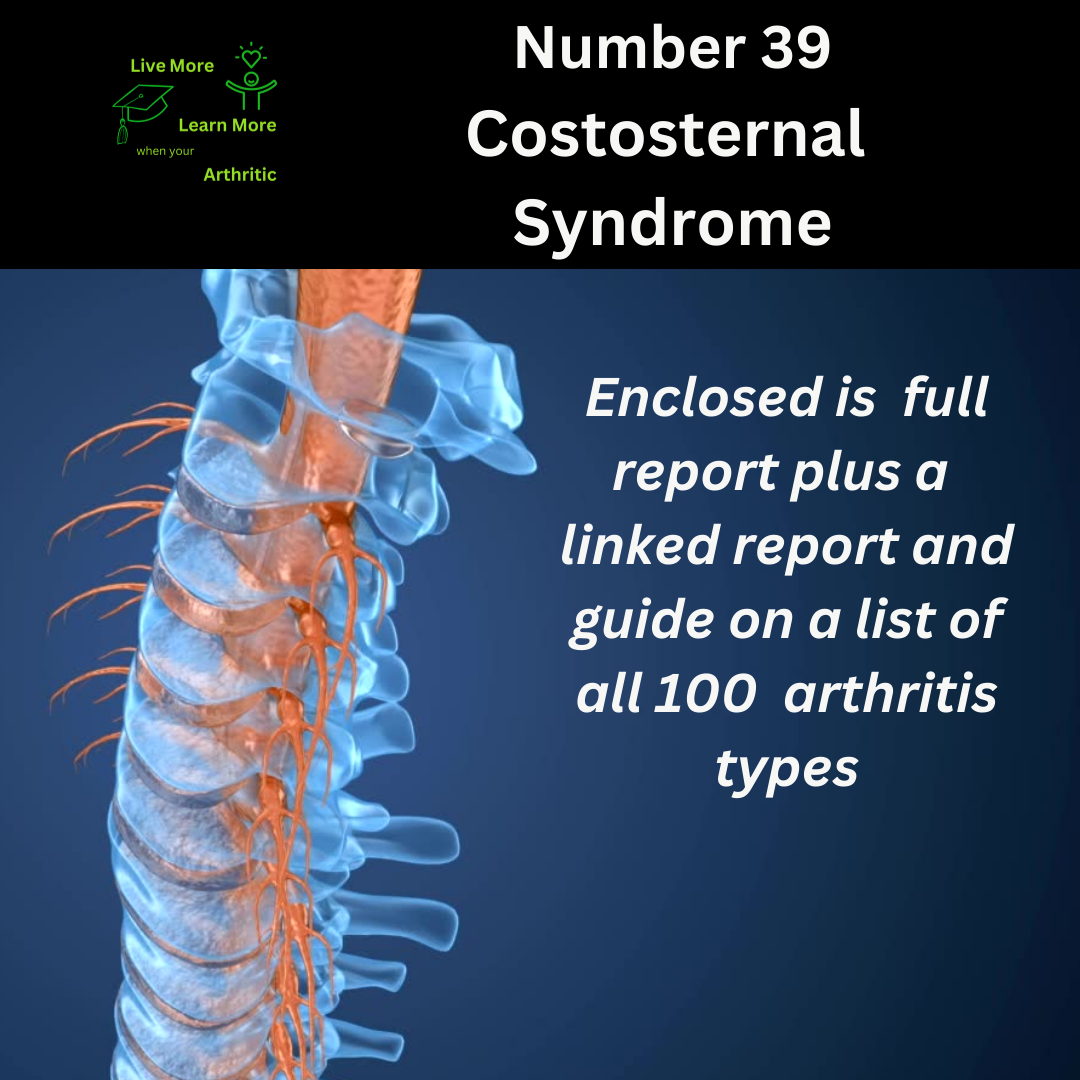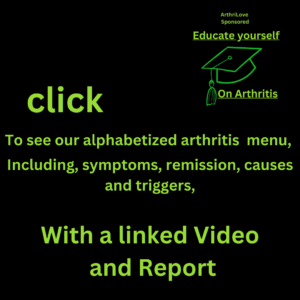
Costosternal Syndrome: Number 39 on the list of 100 types of Arthritis
Understanding Costosternal Syndrome
Costosternal Syndrome, often referred to as Tietze syndrome or costochondritis, is a condition characterized by inflammation of the costosternal (rib to sternum) or costochondral (rib to cartilage) junctions. This inflammation can result in localized chest pain, tenderness, and swelling, which can be distressing and often mimic symptoms of more serious cardiac conditions.
The hallmark symptom of Costosternal Syndrome is pain and tenderness around the chest wall, particularly where the ribs meet the sternum (breastbone). The pain is typically sharp, stabbing, or aching in nature, and it may worsen with movement, deep breathing, or physical exertion. Swelling and redness can also be present in the affected area.
Patients with Costosternal Syndrome may experience anxiety and fear due to the similarity of symptoms to those of a heart attack. This can lead to unnecessary visits to emergency departments or cardiologists, highlighting the importance of accurate diagnosis and education about the condition.
Causes and Triggers
The exact cause of Costosternal Syndrome is often unknown. However, several factors can contribute to its development:
- Repetitive Trauma or Strain: Activities that involve repetitive movements of the upper body, such as heavy lifting, strenuous exercise, or certain occupational tasks, can strain the costosternal joints and lead to inflammation.
- Injury or Trauma: Direct trauma to the chest wall, such as from a fall, car accident, or sports injury, can trigger inflammation of the costosternal joints.
- Underlying Inflammatory Conditions: Costosternal Syndrome can occur in individuals with underlying inflammatory disorders like rheumatoid arthritis, ankylosing spondylitis, or psoriatic arthritis.
Age of Onset and Gender Distribution
Costosternal Syndrome commonly affects adults between the ages of 20 and 40, though it can occur at any age. Women are more frequently affected than men, although the reasons for this gender disparity are not fully understood. Hormonal factors, differences in chest wall anatomy, and variations in pain perception may play a role.
Impact on Quality of Life
Living with Costosternal Syndrome can significantly impact quality of life, especially during flare-ups. However, proactive management strategies can help improve symptoms and overall well-being:
- Gentle Exercise: Engaging in low-impact exercises such as swimming, walking, or yoga can promote flexibility and reduce stiffness without exacerbating symptoms.
- Stress Reduction Techniques: Practicing relaxation techniques such as meditation, deep breathing exercises, or mindfulness can help manage pain-related stress and anxiety.
- Ergonomic Adjustments: Making ergonomic adjustments in daily activities, such as using proper posture and avoiding repetitive movements, can prevent exacerbation of symptoms.
 Complications and Holistic Approaches
Complications and Holistic Approaches
While Costosternal Syndrome is generally benign, complications such as chronic pain, limited mobility, and reduced quality of life can occur in severe cases. Holistic approaches and alternative therapies may offer additional relief:
- Acupuncture: Some individuals find acupuncture helpful in reducing pain and inflammation associated with Costosternal Syndrome.
- Dietary Modifications: Adopting an anti-inflammatory diet rich in fruits, vegetables, and omega-3 fatty acids while avoiding processed foods and excess sugar may help manage symptoms.
Interconnected Conditions
Costosternal Syndrome can be associated with other musculoskeletal disorders and inflammatory conditions, including fibromyalgia, psoriatic arthritis, or ankylosing spondylitis. Recognizing these connections is important for comprehensive management and treatment planning.
In summary, Costosternal Syndrome is a challenging condition characterized by chest pain and inflammation of the rib-sternum junctions. Understanding its causes, triggers, symptoms, and management strategies is essential for individuals affected by this syndrome to navigate their journey towards improved quality of life and well-being.
